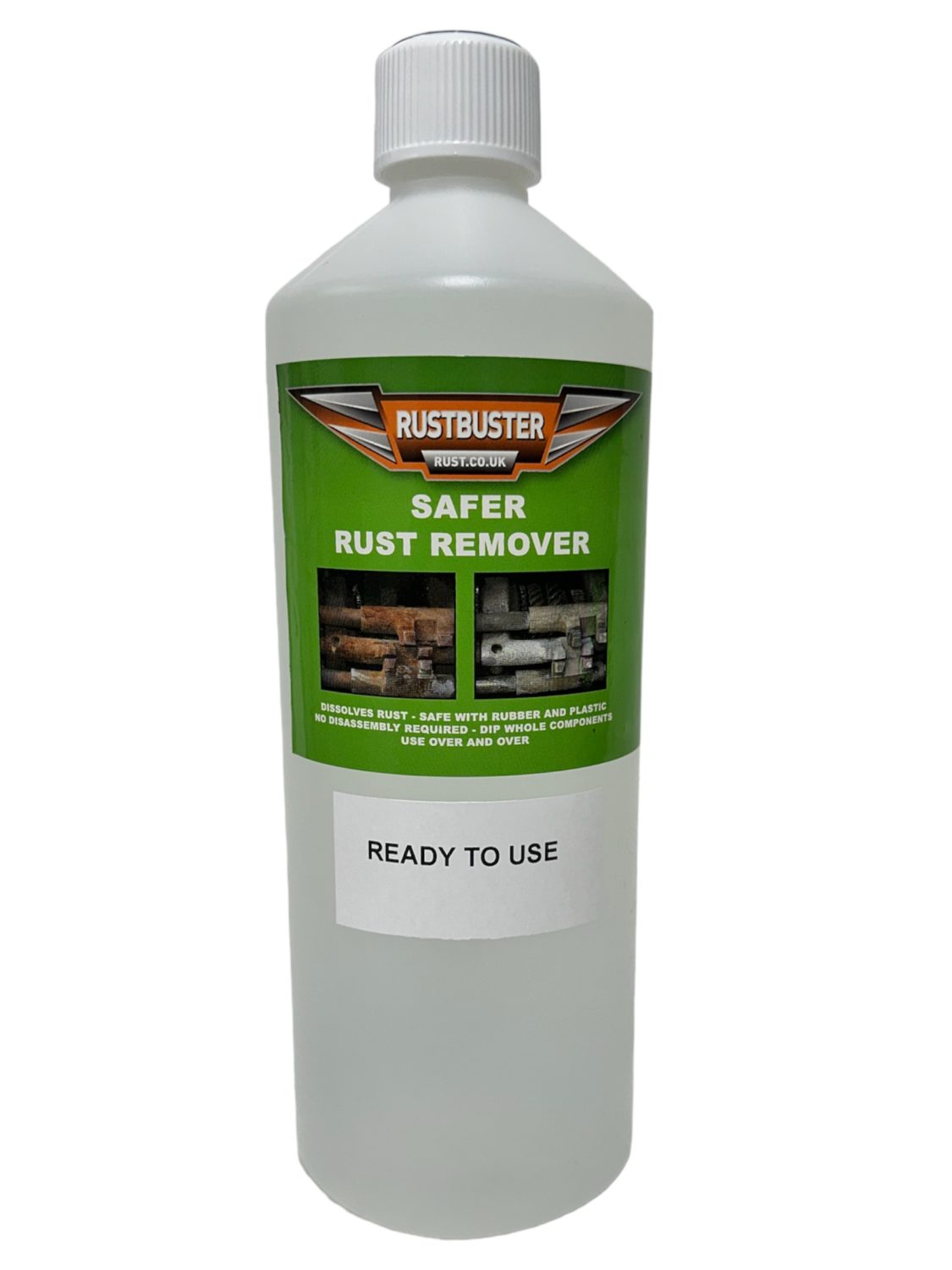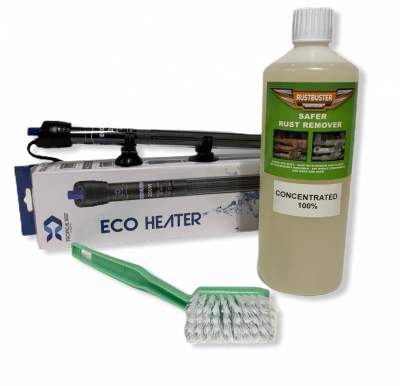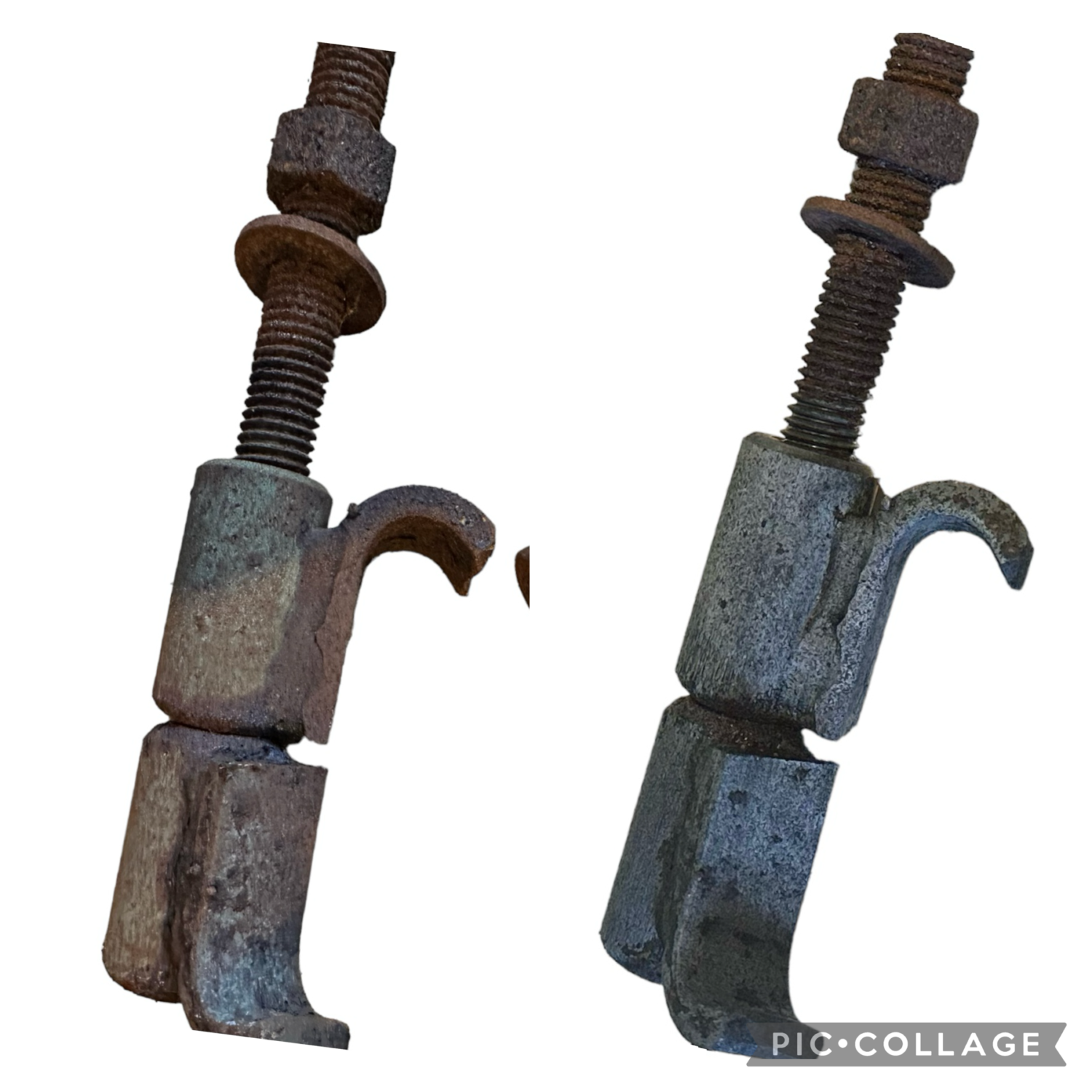With the re-introduction of Rustbuster’s Safer Rust Remover we thought we better let you know why this is different, where it can be used and how. Firstly though,

What is a Chelating Rust Remover???
A chelating rust remover is a type of solution or product used to remove rust from metal surfaces. It contains chelating agents, which are chemicals capable of forming stable, water-soluble complexes with metal ions, particularly iron ions found in rust.
How does a Chelating rust remover work???
Chelating rust removers work through a process called chelation, where certain compounds form stable, water-soluble complexes with metal ions, such as iron ions present in rust. Here’s how it typically works:
- Chelating Agent Application: Chelating rust removers contain specific chemicals known as chelating agents. These agents are usually organic compounds that have multiple binding sites, such as amino acids or synthetic chelating agents like EDTA (ethylenediaminetetraacetic acid) or citric acid.
- Chemical Reaction with Rust: When applied to a rusted surface, the chelating agent molecules chemically react with the iron ions (Fe2+ or Fe3+) present in the rust. The chelating agent forms coordination complexes with the iron ions, surrounding them and binding them tightly.
- Dissolving Rust: Once the chelating agent has bound to the iron ions, it effectively dissolves the rust from the surface. This process breaks down the rust into soluble complexes, which can then be easily rinsed away with water or wiped off with a cloth.
- Preventing Reformation of Rust: Some chelating rust removers may leave behind a protective coating or residue on the treated surface. This coating helps to inhibit further oxidation of the metal, thereby reducing the likelihood of rust reformation in the future.
- Environmentally Friendly: Chelating rust removers are often preferred for their relatively low toxicity and environmental impact compared to harsher rust removal methods, such as acids. They are also less likely to cause damage to the underlying metal substrate.
Chelating rust remover Vs High strength acids
Chelating rust removers and high acid rust removers are two different types of products used for removing rust, and they work through different mechanisms. Here’s a comparison of the two:
- Chelating Rust Removers (Safer Rust Remover):
- Mechanism: Chelating rust removers contain chelating agents, which are chemicals that form stable, water-soluble complexes with metal ions, such as iron ions present in rust. These agents surround and bind to the iron ions, effectively dissolving the rust from the surface.
- Effectiveness: Chelating rust removers are generally effective at removing rust from metal surfaces without causing damage to the underlying metal. They are particularly useful for delicate or intricate surfaces where abrasive methods might cause harm.
- Safety: Chelating rust removers are often safer for the environment and less hazardous to use compared to high acid rust removers, as they typically contain milder chemicals.
- Residue: Some chelating rust removers may leave behind a protective coating or residue that helps prevent further rusting on the treated surface.
- High Acid Rust Removers (Phos-Kleen A and B):
- Mechanism: High acid rust removers typically contain strong acids, such as hydrochloric acid (muriatic acid) or phosphoric acid. These acids react with the iron oxide (rust) to dissolve it chemically, converting it into a soluble form that can be rinsed away.
- Effectiveness: High acid rust removers are usually more aggressive and can remove heavy rust deposits quickly. However, they may also etch or damage the metal surface if not used properly, especially if left on for too long.
- Safety: High acid rust removers are more corrosive and potentially hazardous compared to chelating rust removers. They require careful handling, including protective gear such as gloves and goggles, and proper ventilation during use.
- Residue: High acid rust removers may not leave behind a protective coating, so treated surfaces may be more prone to rusting again if not properly protected after cleaning.
While both chelating rust removers and high acid rust removers can effectively remove rust, they differ in their mechanisms, effectiveness, safety considerations, and potential for leaving protective residues. The choice between them depends on factors such as the severity of the rust, the type of surface being treated, and safety preferences.
In Conclusion
Rustbuster Safer Rust Remover is a Chelating rust remover and this has benefit for a number of reasons, it’s safe to use, environmentally friendly, won’t damage parts or the underlying surface, perfect as a dipping solution, simply put Slow and Safe.





